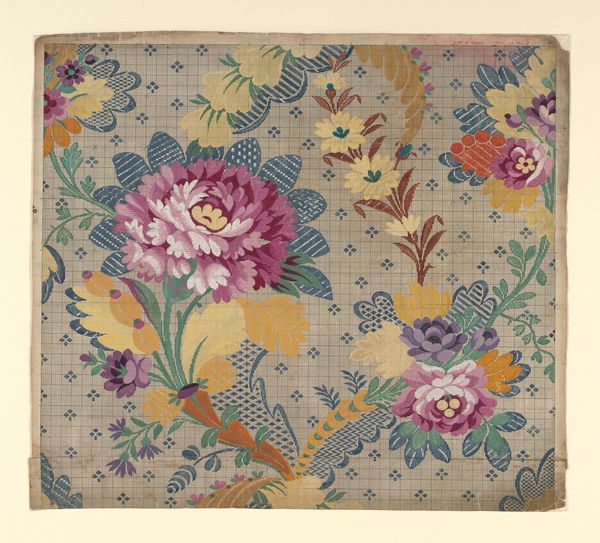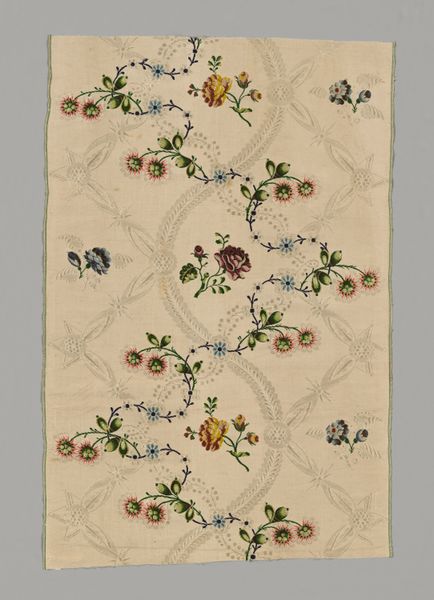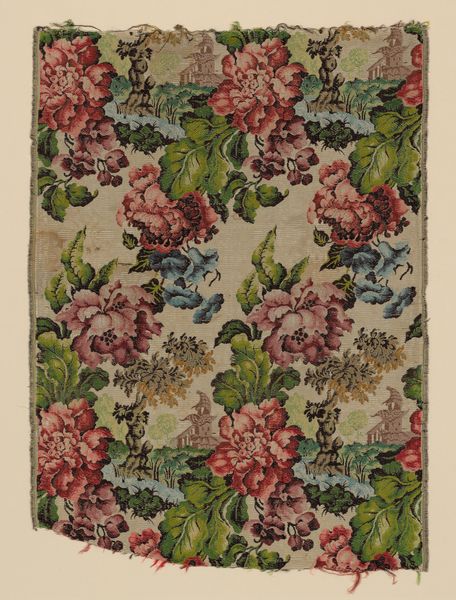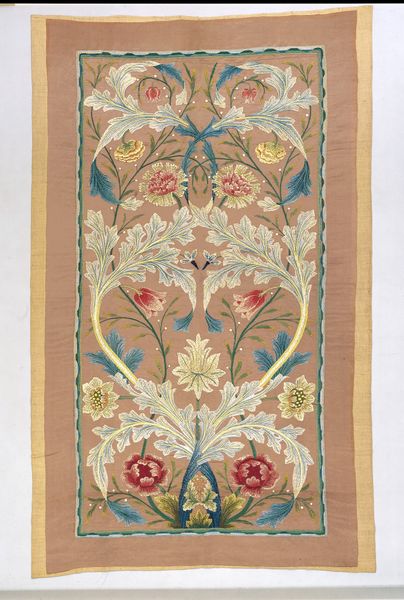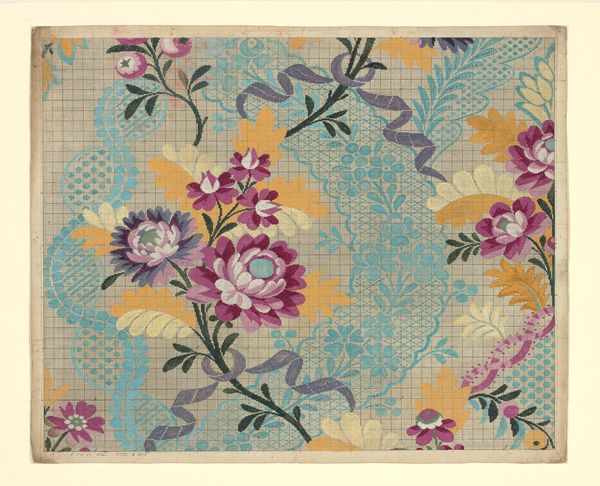
panel, silk, textile
#
panel
#
silk
#
pattern
#
textile
#
rococo
Dimensions: 21 3/8 x 22 1/2 in. (54.28 x 57.15 cm)
Copyright: Public Domain
This anonymous panel at the Minneapolis Institute of Art presents a field of floral patterns in a repeated, symmetrical arrangement. Predominantly, there are salmon-colored blossoms set against a soft, dotted background. The composition relies on a structured distribution of elements. Notice how the flowers and leafy vines create a rhythmic visual cadence across the surface. This regular pattern flattens the pictorial space, drawing attention to the textile’s two-dimensional design rather than any illusion of depth. This panel challenges the traditional concept of art by prioritizing surface design over representational imagery. The structural repetition of the floral motifs denies any singular focal point. Instead, it establishes a network of visual relationships. This shift reflects a broader cultural move toward valuing mass production and reproducibility. Consider how the panel's emphasis on pattern anticipates later artistic movements that questioned the boundaries between fine art and decorative arts, prompting ongoing conversations about the nature of artistic value.
Comments
minneapolisinstituteofart almost 2 years ago
⋮
In eighteenth century France, the interior of a residence actually became far more important than the exterior because it reflected the social standing of its owner. Reception rooms were decorated with carved wall paneling, and tall windows were draped with heavy silk curtains. This silk panel, woven with an exotic floral design, likely was part of a drapery. During the early 1730s increasingly naturalistic designs were introduced, made possible by the shading technique, point rentré, invented by the designer Jean Revel (1684-1751). A gradual variation in tonalities was achieved by interpenetrating two different adjacent colors.
Join the conversation
Join millions of artists and users on Artera today and experience the ultimate creative platform.
